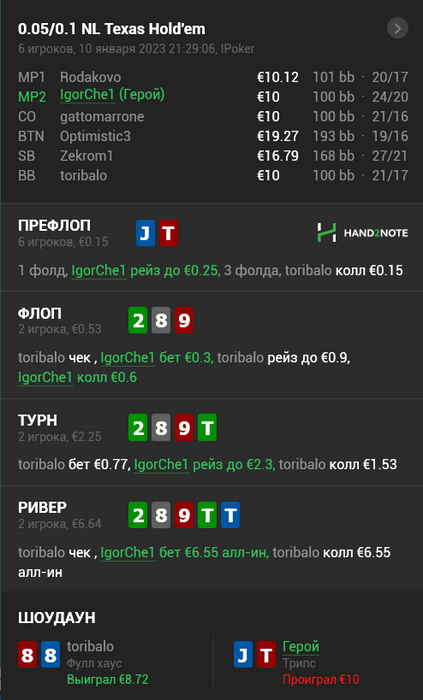Igor IgorChe was the first who was not afraid to get an assessment of his analytical skills.
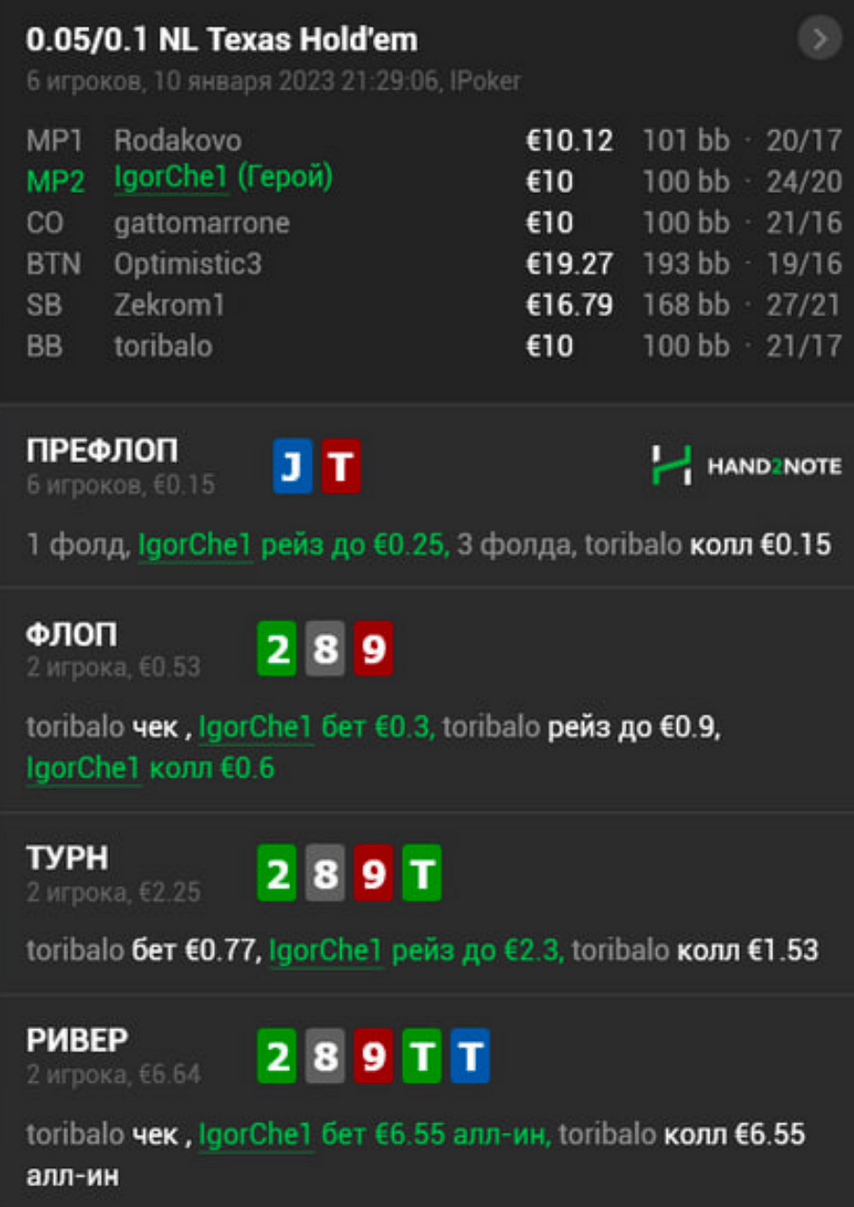
Player Analysis
The hand was played on tilt. The opponent is a slightly -ev reg. At that time there were no statistics on it.
Preflop
Error in the opening ranges. I don't usually open JTo with MP.
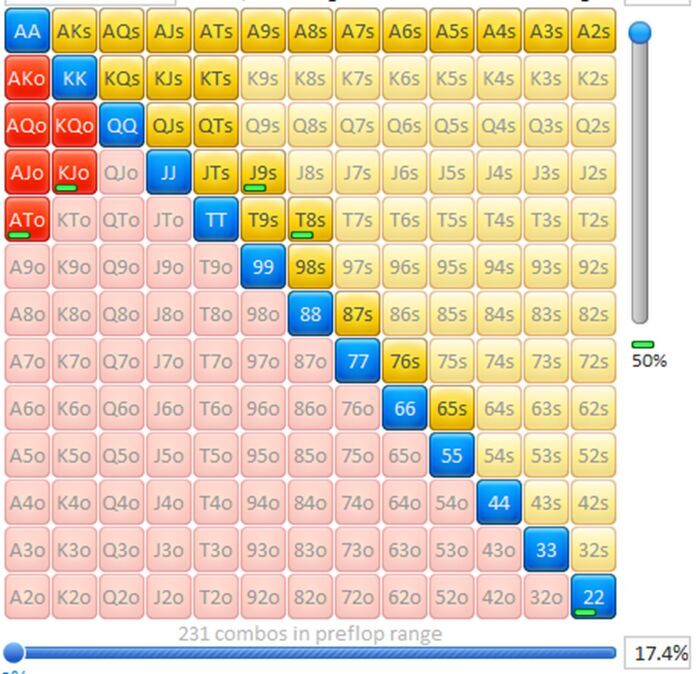
Flop
The flop gives us an open-ended straight draw. The opponent's range also hits this board well.
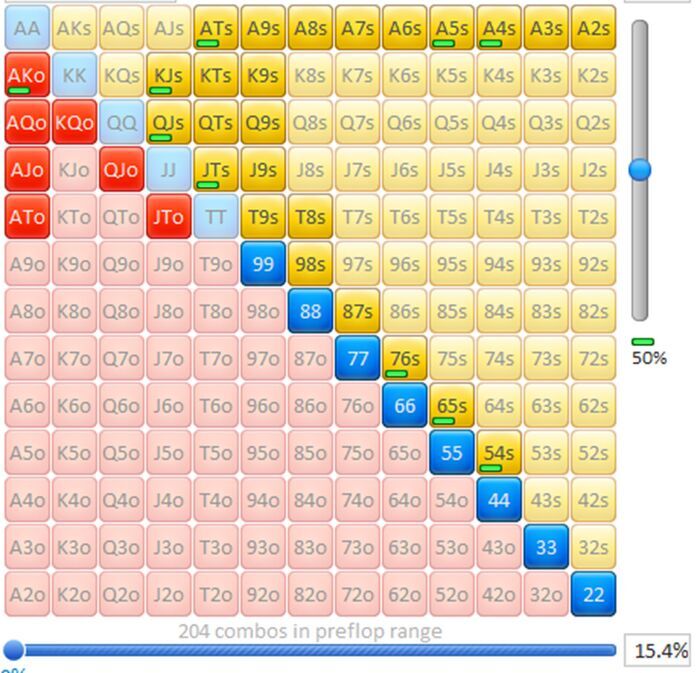
I plan on betting at least 2/3 the pot to knock out a pair of eights, pocket pairs 33-77, and other potential opponent equity with two bets.
The villain raises three times the bet. His raising range consists of sets, two pair, almost all open-ended straight draws, and sometimes gutshot straight draws.
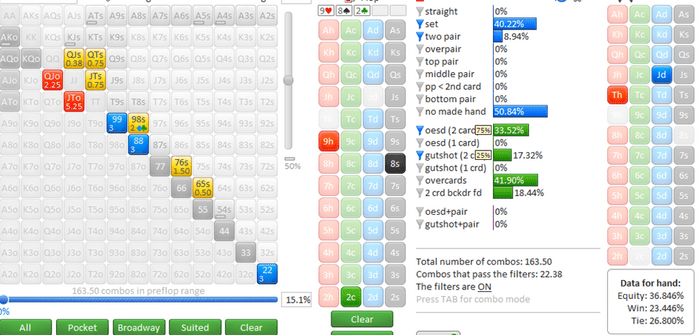
The pot odds are 26%, which allows us to call the raise.
Turn
My opponent bets a little, I give him only sets and two pair in the range, and having chances to get there, I decide to bluff by raising the turn and, possibly, push the river on certain cards. I get a call.
River
A disgusting card has come, and the opponent checks. I got some showdown value since I now have two pair, but the sets turned into full houses.
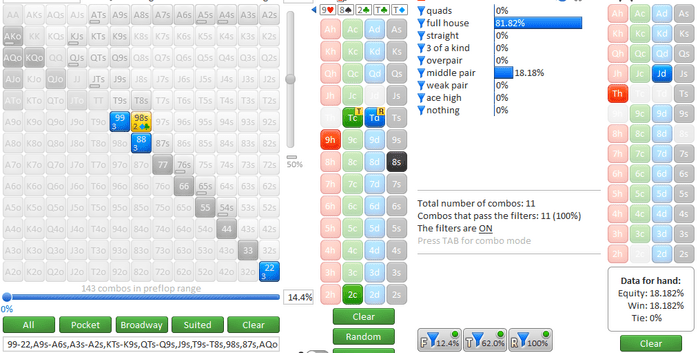
I figured that by improving to a full house, most opponents would donk here, perhaps a small amount. Apparently, pushing from me was for value.
Expert analysis (Alexander shpr0ta , GreenLine fund trainer)
The opponent is a slightly -ev reg.
What information does this statement give? Do you understand why this reg plays in the red? If not, then this is unnecessary information that only prevents you from concentrating on what is important.
Error opening JTo with MP.
I wouldn't call it a mistake. But here you need to understand that the higher the rake, the less we want to start marginal hands pre-flop. Given the limit, I think you can fold.
The board gives us an open-ended straight draw. I plan on betting at least 2/3 the pot to knock out a pair of eights, and pocket pairs 33-77.
I think you can bet the flop for different sizes. The main mistake here is to think about what we want to bluff out, and not about what value bets we will have and for what size. Value first, then bluffs. If your plan is only to knock out the equity of some A-high, K-high hands, and small pockets, and at the same time you plan to bet at least two streets, then I see no reason to start with two/thirds the pot. After betting like this on the flop, we will have much less fold equity on the turn than if we pick a line that starts with 1/3 of the pot.
Opponent raises. His raising range consists of sets, two pair, almost all open-ended and sometimes gutshot straight draws.
Agree. Given that we have the nut OESD, we can't fold.
Villain bets low on the turn, and I give him only sets and two pair in his range. I decide to raise as a bluff.
What's the point of bluff-raising against a range that, according to your analysis, is all nuts? The basic rule of bluffing is to beat hands that are better, which means there must be fold equity. If you give him such a strong range, then fold equity = 0. Therefore, there is no point in bluffing.
However, I wouldn't see his small bet as just the nuts. More often than not, people will play greedily with sets and two pair even on this turn. Therefore, by default, I would consider his bet as a weakness, respectively, the ten can be raised for value.
River. It's a lousy card, I've got showdown value, but I still get it.
This thought process is completely played without logic. First, on the turn, you give him the nuts, but you're bluffing in the process. You think the river is disgusting, but you bet, although you have the opportunity to see the showdown for free.
I figured that by improving to a full house, most opponents would donk here.
In general, the “raise + bet-call + donk” line is so rare that it is difficult to analyze it somehow. Most opponents won't play a set or two pair on the turn with a third of the pot. Therefore, I consider all these arguments on the river to be superfluous.
In fact, I think we can raise the turn for value with this size and shove the river for value since the line is weak most of the time and there will be very few better hands. Either don't raise the turn or bet the river.
The main advice that can be given to a player is to build your strategy based on value, and not on bluffs. That is, in any situation where we make an aggressive action, be it a bet or a raise, we first need to think about our value bets and what size we want to use with them. And only then do we think about bluffs. Because not only is the number of bluffs tied to the number of value bets but bluff sizing is tied to value bet sizing, especially on early streets. In this hand, we immediately began to build our thoughts on bluffs and tried to knock something out of our opponent.
Distribution result
Spoiler:
